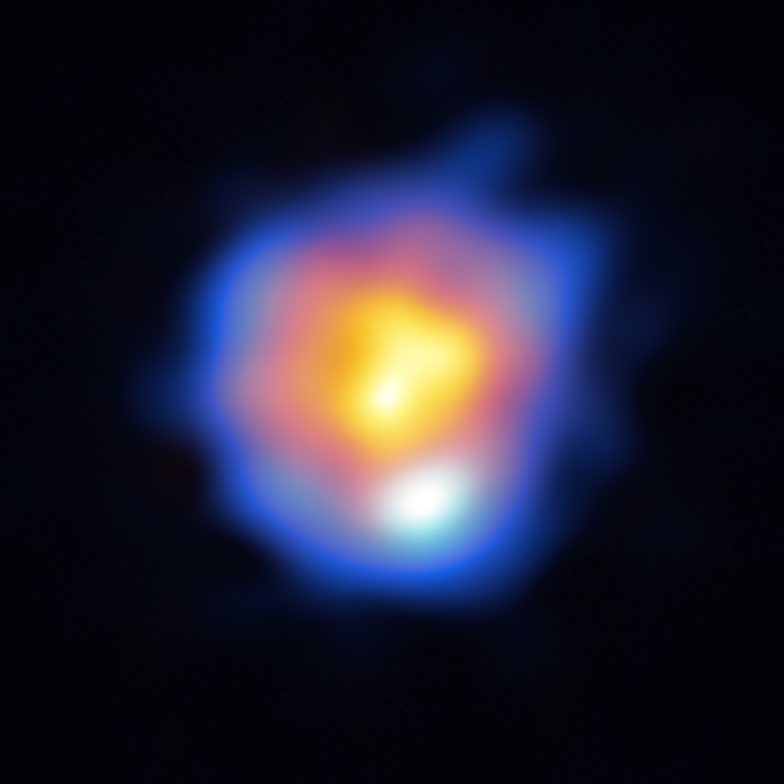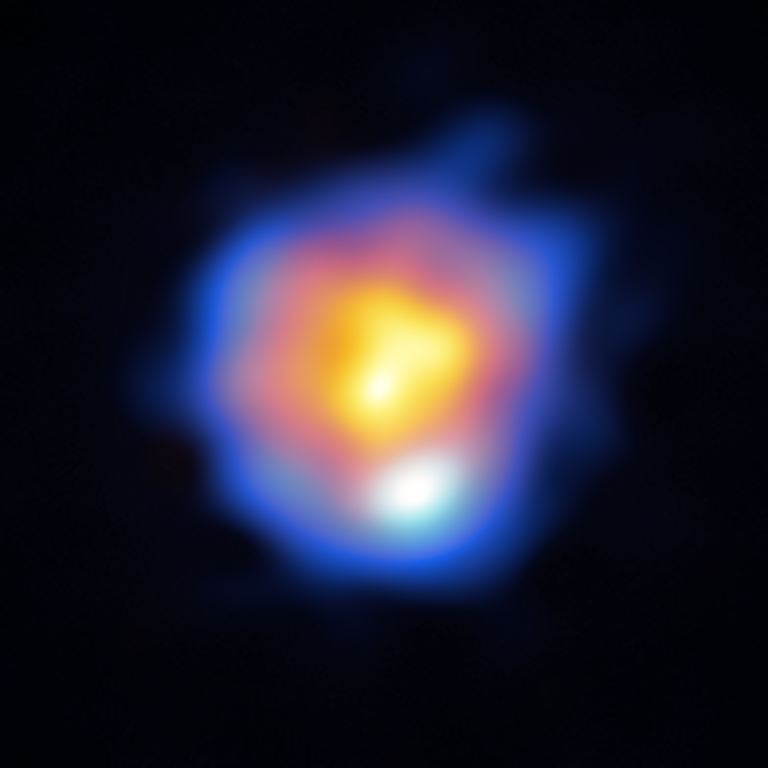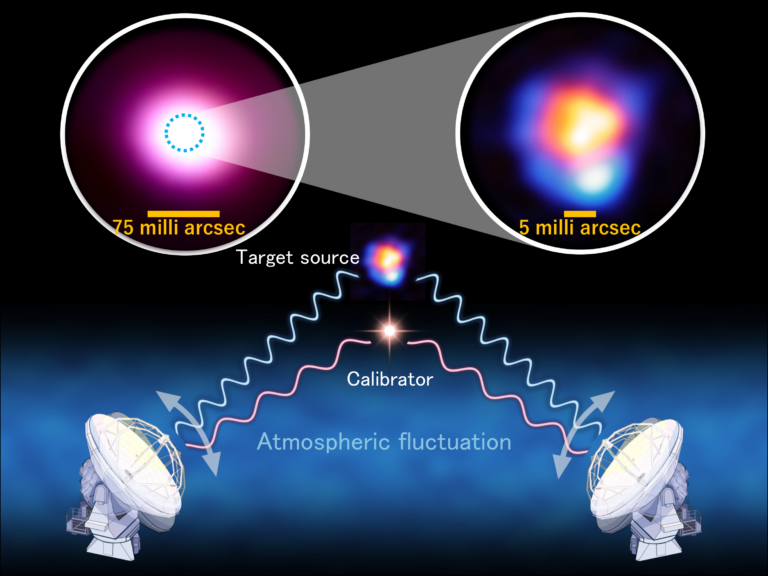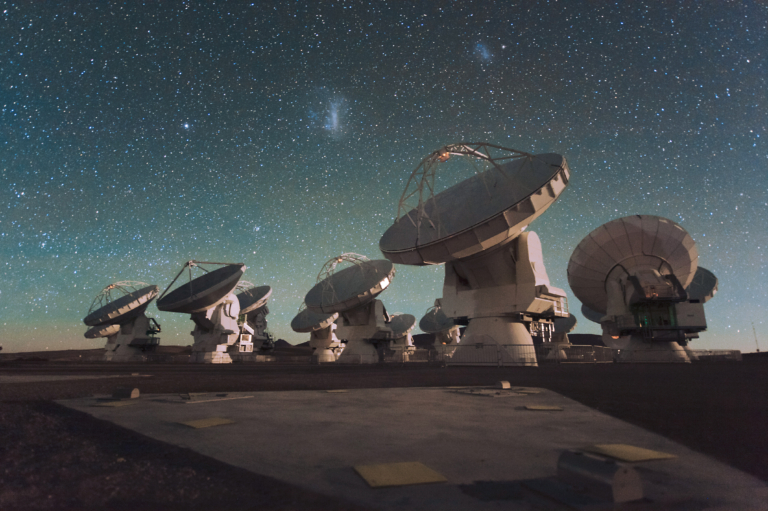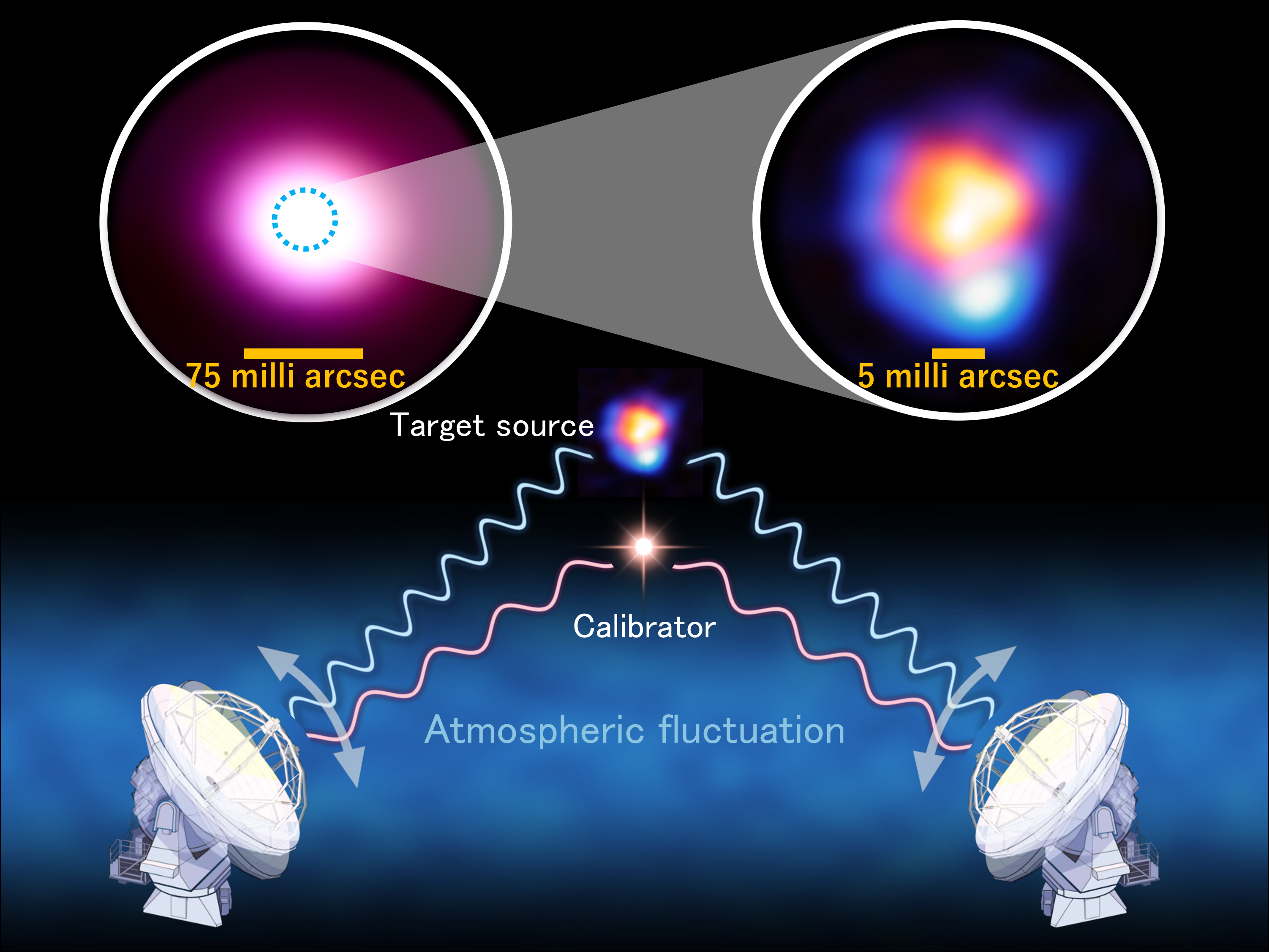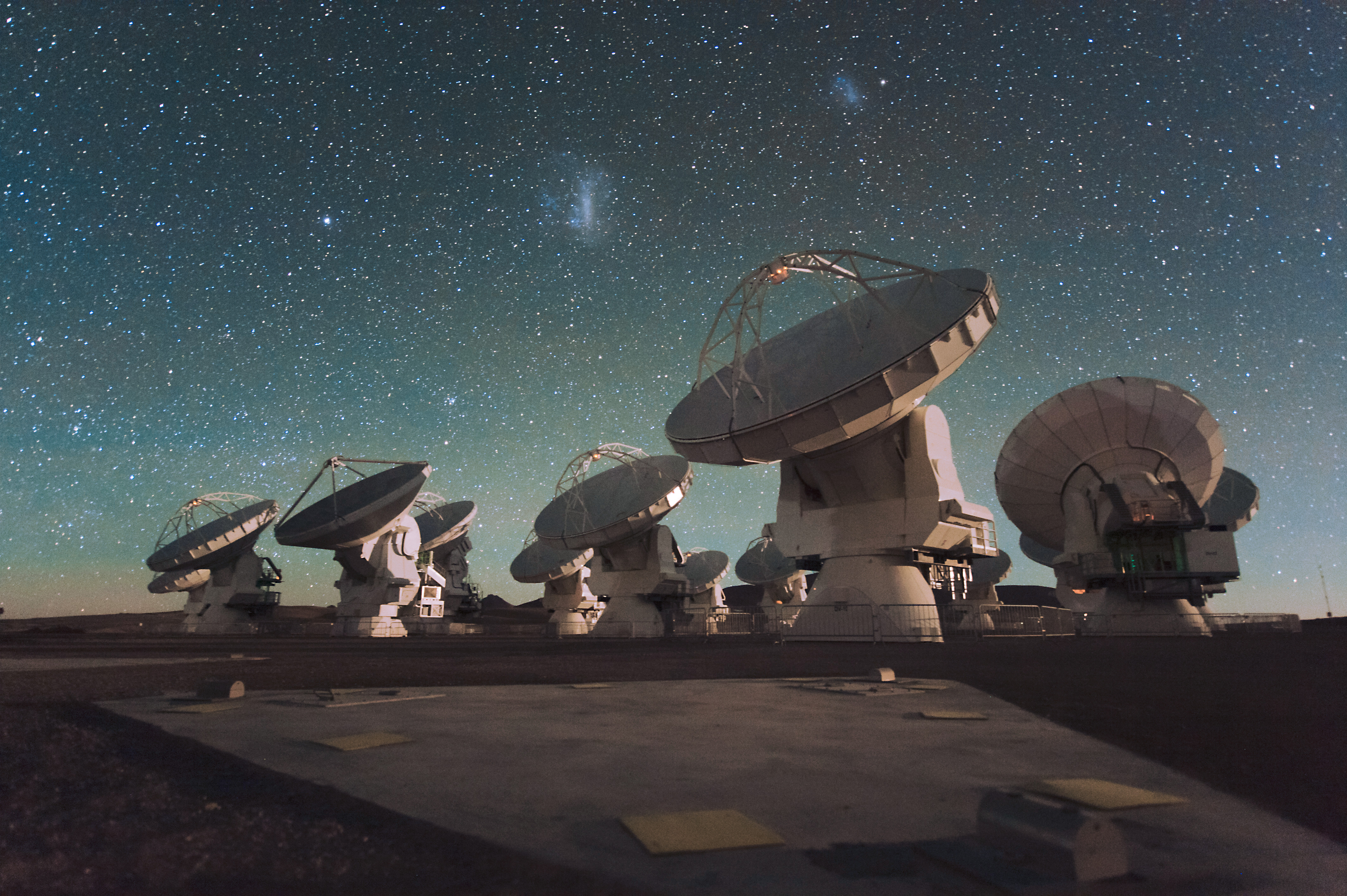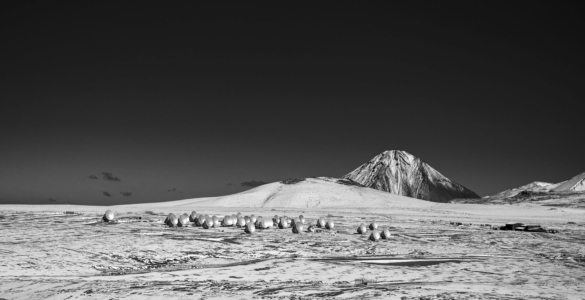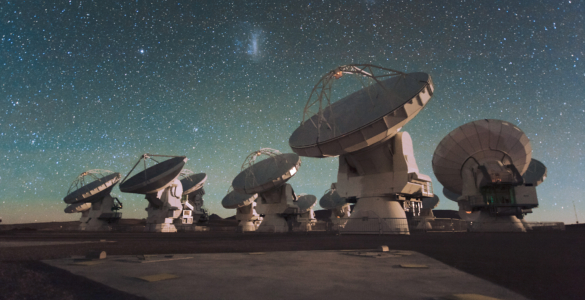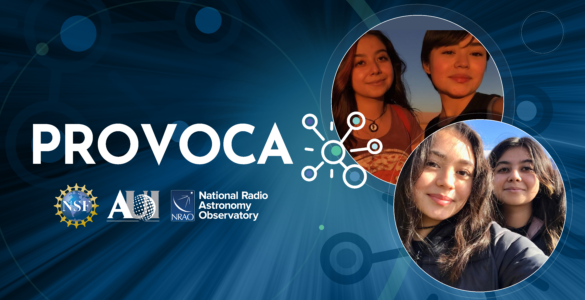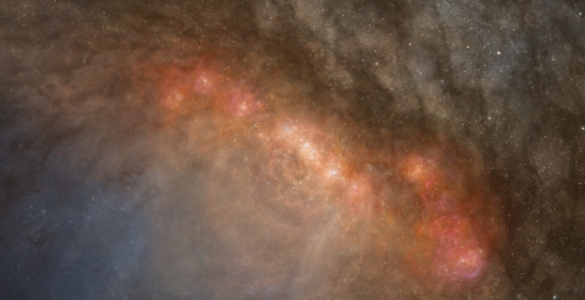An international team of astronomers has collaborated to improve the capabilities of the Atacama Large Millimeter/submillimeter Array (ALMA), one of the world’s most powerful telescopes. Scientists from the National Science Foundation’s National Radio Astronomy Observatory (NRAO), the Joint ALMA Observatory, the National Astronomical Observatory of Japan (NAOJ), and European Southern Observatory have achieved the highest resolution observation since ALMA began operations, in one of the most challenging array configurations. The results are published today in the Astrophysical Journal.
ALMA has 66 parabolic dish antennas. Combinations of these antennas are used together as an interferometer, where the observations of many instruments are combined as one giant telescope. Each antenna is equipped with receivers that allow it to observe radio waves in different frequency ranges, or bands. The many signals collected by the individual antennas are synthesized together in a correlator.
The array’s highest resolution is achieved when it is configured to its maximum extent, or widest antenna baseline, and observes at its highest frequency. When arranged in different configurations, such as Band 10 (which was used with approximately 50 antennas for this test) there can be up to 10 miles between the location of each dish. The weather, atmosphere, and minute differences between individual antennas must be accounted for and corrected to make observing possible. To help correct for these errors, a bright target is set to calibrate the antennas. However, when observing at higher frequencies, the availability of bright calibrator is scarce and hence severely hampers the calibration process.
To solve this problem, astronomers tried the “Band-to-Band” (B2B) method, which was first developed in the 1990s by the Nobeyama Radio Observatory of NAOJ. When ALMA was constructed, hardware and software infrastructure was put in place to one day try this method, which was first tested in 2020 using Band 9 receivers and an array baseline of just over 8 ½ miles. The B2B observing technique consists of observing a bright calibrator at a lower frequency, and applying the calibration solutions from that data to the higher frequency, in which the science target is observed.
Results from this latest test, using B2B at Band 10 with the longest distance between the antennas, have achieved the highest resolution of 5 milli-arcsec (=1/720000 degrees) ever captured, the equivalent of being able to see a single human hair two and a half miles away. For this test, astronomers observed R Leporis, a star in its final stage of evolution, located approximately 1,535 light-years away from Earth in the Milky Way galaxy. The B2B calibration used a nearby bright galactic core, which, while distant, appears nearby R Leporis in the sky.
Antonio Hales, NRAO Scientist and Deputy Manager of the North American ALMA Regional Center, also part of the team that achieved these results, highlights the importance of these results: “By achieving this unparalleled resolution through the Band-to-Band method, we’ve pushed ALMA’s capabilities to their absolute limit, unveiling a new window to the cosmos. This breakthrough allows astronomers to probe cosmic phenomena with a precision once thought unattainable, marking a significant testament to ALMA’s power and paving the way for future discoveries that will undoubtedly deepen our understanding of the Universe’s most profound secrets.”
See the press release from the National Astronomical Observatory of Japan.
See the press release from European Southern Observatory.
This result was presented in a paper titled “ALMA High-frequency Long Baseline Campaign in 2021: Highest Angular Resolution Submillimeter Wave Images for the Carbon-rich Star R Lep” to appear in the Astrophysical Journal (doi:10.3847/1538-4357/acf619).
The team is composed of Y. Asaki (JAO; NAOJ; SOKENDAI), L. Maud (ESO; Leiden University), H. Francke (JAO), H. Nagai (NAOJ), D. Petry (ESO), E. B. Fomalont (NRAO), E. Humphreys (JAO; ESO), A. M. S. Richards (University of Manchester), K. T. Wong (IRAM; Uppsala University), W. Dent (JAO), A. Hirota (JAO; NAOJ), J. M. Fernandez (Lowell Observatory), S. Takahashi (NAOJ), and A. S. Hales (JAO; NRAO).
About ALMA & NRAO
The Atacama Large Millimeter/submillimeter Array (ALMA), an international astronomy facility, is a partnership of the European Organisation for Astronomical Research in the Southern Hemisphere (ESO), the U.S. National Science Foundation (NSF) and the National Institutes of Natural Sciences (NINS) of Japan in cooperation with the Republic of Chile. ALMA is funded by ESO on behalf of its Member States, by NSF in cooperation with the National Research Council of Canada (NRC) and the Ministry of Science and Technology (MOST) and by NINS in cooperation with the Academia Sinica (AS) in Taiwan and the Korea Astronomy and Space Science Institute (KASI).
ALMA construction and operations are led by ESO on behalf of its Member States; by the National Radio Astronomy Observatory (NRAO), managed by Associated Universities, Inc. (AUI), on behalf of North America; and by the National Astronomical Observatory of Japan (NAOJ) on behalf of East Asia. The Joint ALMA Observatory (JAO) provides the unified leadership and management of the construction, commissioning and operation of ALMA.
The NRAO is a facility of the National Science Foundation, operated under cooperative agreement by Associated Universities, Inc.
###
Jill Malusky, NRAO & GBO News & Public Information Manager
304-460-5608


